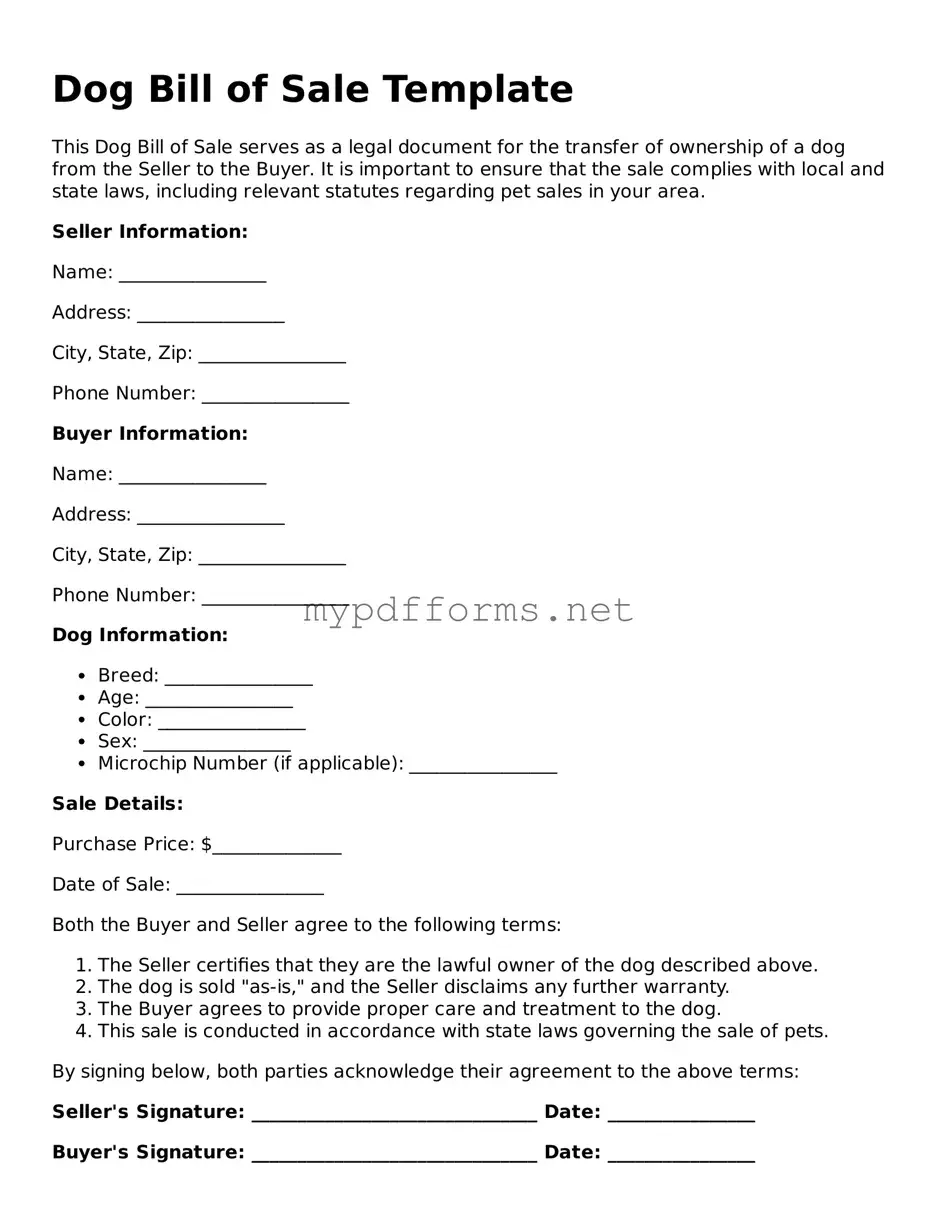The Dog Bill of Sale form serves as a crucial document in the process of transferring ownership of a dog from one party to another. This form outlines key details such as the names and contact information of both the seller and the buyer, ensuring that both parties are clearly identified. It typically includes a description of the dog, including its breed, age, color, and any identifying features, which helps prevent any confusion regarding the animal being sold. Additionally, the form often stipulates the purchase price, payment method, and any conditions or warranties related to the sale. By providing a written record of the transaction, the Dog Bill of Sale form not only protects the interests of both parties but also serves as proof of ownership, which can be important for registration and veterinary purposes. Having this document in place can simplify future interactions regarding the dog, making it a vital part of responsible pet ownership.
